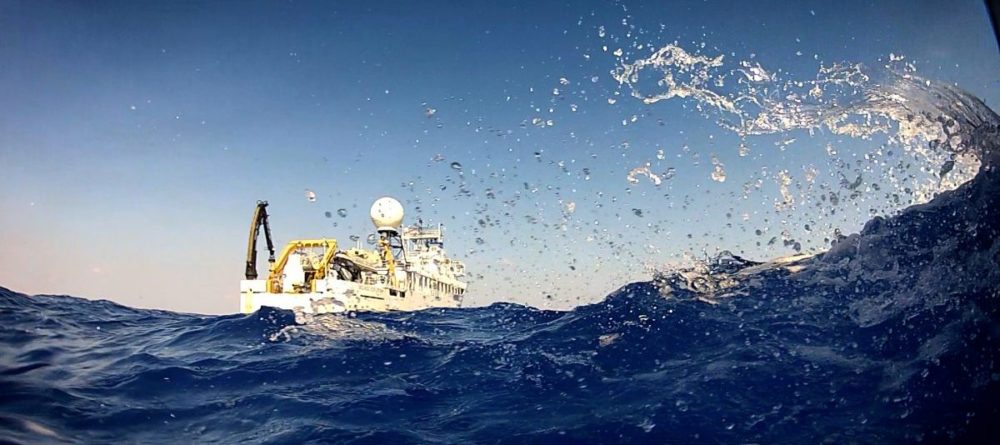First the good news: Through recent continuing appropriations (Public Law No. 115-124 on 2/9/2018), the federal government funding has been sustained near FY17 enacted levels in FY18. The kickoff for the FY19 budget began when the President’s proposed budget was released two weeks ago.
Now the concerning news: Deep cuts to National Oceanic and Atmospheric Administration (NOAA) research capabilities loom in the FY19 proposed budget (Figure 1). Including complete elimination of federal funding for the following in the Office of Oceanic and Atmospheric Research (OAR) and the National Ocean Service (NOS):
- NOS: Coastal Science Competitive Research
- NOS: Coastal Management Grants
- NOS: National Estuarine Research Reserve System
- OAR: Climate Competitive Research
- OAR: Joint Technology Transfer Initiative
- OAR: National Sea Grant College Program
- OAR: Research Transition Acceleration Program
Research forms the foundation for advances in NOAA core missions, including weather predictions that ensure public safety, protect economic assets and activities, and support for navigation by military, commercial and private vessels.
NOAA budget in context
Research and development (R&D) underpins NOAA’s core missions and their importance to people living in the U.S. and beyond. It may come as a surprise to many who inspect this illuminating AAAS graph that the NOAA R&D budget is tiny (~0.01% of U.S. Gross Domestic Product (GDP) in 1976, declining to <0.01% of 2016 GDP) compared to most other agencies with R&D programs (e.g. NIH, DOD, DOE, NASA). We really get a lot of bang for our buck at NOAA – an economic analysis revealed that NOAA products and services affect more than a third of U.S. GDP. It is therefore striking to see large cuts proposed for FY19 (Figure 1).
NOAA-funded flood research in Houston in advance of Hurricane Harvey: Were lives saved?
Oklahoma and Texas have experienced devastating floods recently. My colleague Nick Mailloux found an OAR research grant initially funded in 2011 that allowed researchers at the University of Oklahoma to develop computer visualization techniques that helps local planners and decision makers understand the ramifications of current and potential future flood hazards in Austin, Dallas, Houston, Oklahoma City and Tulsa. The research team’s 2015 report included a project summary that features an image of a flooded Memorial Drive in Houston from May 26, 2015. The researchers credit collaborators in each city for the success of the project.
Did involving local planners and other key stakeholders in this research increase preparedness for the next flood? We may never know if being involved in this study changed how any of the stakeholders made decisions or shared information during the Hurricane Harvey disaster response. It’s hard to judge the societal benefits of just one research grant, but when we consider the number of competitive grants NOAA provides, the benefits can be significant.
We see this by expanding on our Houston example. The Sectoral Applications Research Program (SARP), within NOAA’s Climate and Societal Interactions (CSI) program, funds similar studies on issues of extreme event preparedness, planning, and adaptation in the water sector and the drought sector.
CSI is one of the major areas of focus for competitive research grants from the OAR Climate Program Office (CPO). Others include ocean observing and monitoring and earth system modeling. For example, the CPO 2018 call for research proposals includes grants that would advance NOAA’s sub-seasonal to seasonal predictions of weather patterns. Cities planning to buy large stores of salt and sand for snow, businesses planning for shipments during times of flooding, and farmers deciding which type of crop seed to buy all benefit from such research informing operational advances in the National Weather Service’s (NWS) seasonal weather predictions.
Here is the kicker. The President’s FY19 budget proposal cuts more than a third (37%) from the Oceanic and Atmospheric Research (OAR) program including a request to completely eliminate competitive research grants in NOAA’s Climate Program Office.
NOAA’s Climate Program Office also funds many laboratories and cooperative institutes and regional climate data and information services, which the President’s budget requests a 22% increase and 32% decrease, respectively, with respect to the FY17 spend budget level. Other budget changes include this jaw dropping request:
“…terminate Arctic research focused on improvements to sea ice modeling and predictions that support fishermen, commercial shippers, cruise ships, and local communities. NOAA will also terminate modeling of ecosystem and fisheries vulnerabilities.”
Given the trend toward increasing variability of weather disruptions in the region – the Arctic is warming at more than twice the global rate and sea ice volume and extent are in decline – now is not the time to back away from Arctic research. If anything, we should be funding more Arctic research. The National Academies of Sciences’ Arctic Matters Report notes that Arctic and subarctic waters supply around ten percent of the fish catch worldwide and that half of U.S. fish catch comes from subarctic waters.
Some good news (and some concerning news) for satellites in FY19
NOAA has top tier expertise and capacity incorporating satellite information to support services across the government such as weather forecasts and safe navigation for military, commercial and private vessels. Yet the FY19 budget requests cutting a quarter of the FY17 spend levels for the National Environmental Satellite, Data, and Information Service (NESDIS) (Figure 1).
This sizable cut includes over $230 million from the Joint Polar Satellite System (JPSS), NOAA’s polar weather satellites program. According to NOAA:
“The primary purpose of the JPSS series is to provide global meteorological observations to enable short-term (0-3 days), and mid-range (3-7 days) warnings of severe weather events critical for emergency managers and communities to make timely decisions to protect life and property”
At the AAAS 2018 annual meeting, I heard U.S. Navy Commander Lane, who is the director of the U.S. National Ice Center, say that sub-seasonal and seasonal forecasts improve voyage planning for naval operations in regions with ice hazards for navigation. Close coordination between NOAA, Navy, U.S. Coast Guard, and their Canadian counterparts keeps U.S. sailors safe and helps advance plans for commercial shipping on the Great Lakes and other ice-strewn waters near U.S. ports. It would be prudent to take a closer look at this budget cut to ensure that what remains is sufficient for follow-on satellites and research in support of early and accurate warnings of ice-laden waters, which are increasingly variable in when and where they occur.
The good news is continuity for the GOES-R satellite program through 2036. These satellites provide greatly enhanced information for weather forecasts that directly affect public safety. Yesterday (March 1) the GOES-S satellite successfully launched from Cape Canaveral Florida. Once operational, it will be known as GOES West, and will complement GOES East satellite, which launched last year. According to many presentations I saw at the American Meteorological Society’s 2018 annual meeting, the GOES East satellite (also called GOES-16) provided greater lead times and more accurate information for planners during the devastating 2017 hurricane season. There is a planned decrease of nearly $335 million for the GOES-R program, but that’s expected after new satellites are launched. Still, it is prudent to make sure operational costs are sufficient and include research that tests and validates sensors on the new operational satellites.
National Ocean Service FY19 budget cuts research supporting coastal communities
The budget request for the National Ocean Service (NOS) is down 20% from FY17 spend levels (Figure 1), more evidence that federal research programs are in the cross-hairs of this administration. The budget proposes to terminate the Coastal Zone Management Grants Program and the Regional Coastal Resilience Grants Program. This is shocking when we consider that rising seas are already presenting hard choices for hundreds of U.S. coastal communities.
Terminating research that aids in local decision making also likely means worsening inequities between coastal communities with varying resources for surviving and thriving in the face of rising seas. Among the many options for coastal resilience is ensuring that natural defenses like estuarine wetlands remain in place or are intentionally expanded. Yet the FY19 budget proposes to ‘terminate Federal funding support to states for the management of the National Estuarine Research Reserve System.’
Let me know if there are consequences in your region from any of these proposed FY19 budget cuts. Even better, tell your members of Congress as they examine the FY19 request.





